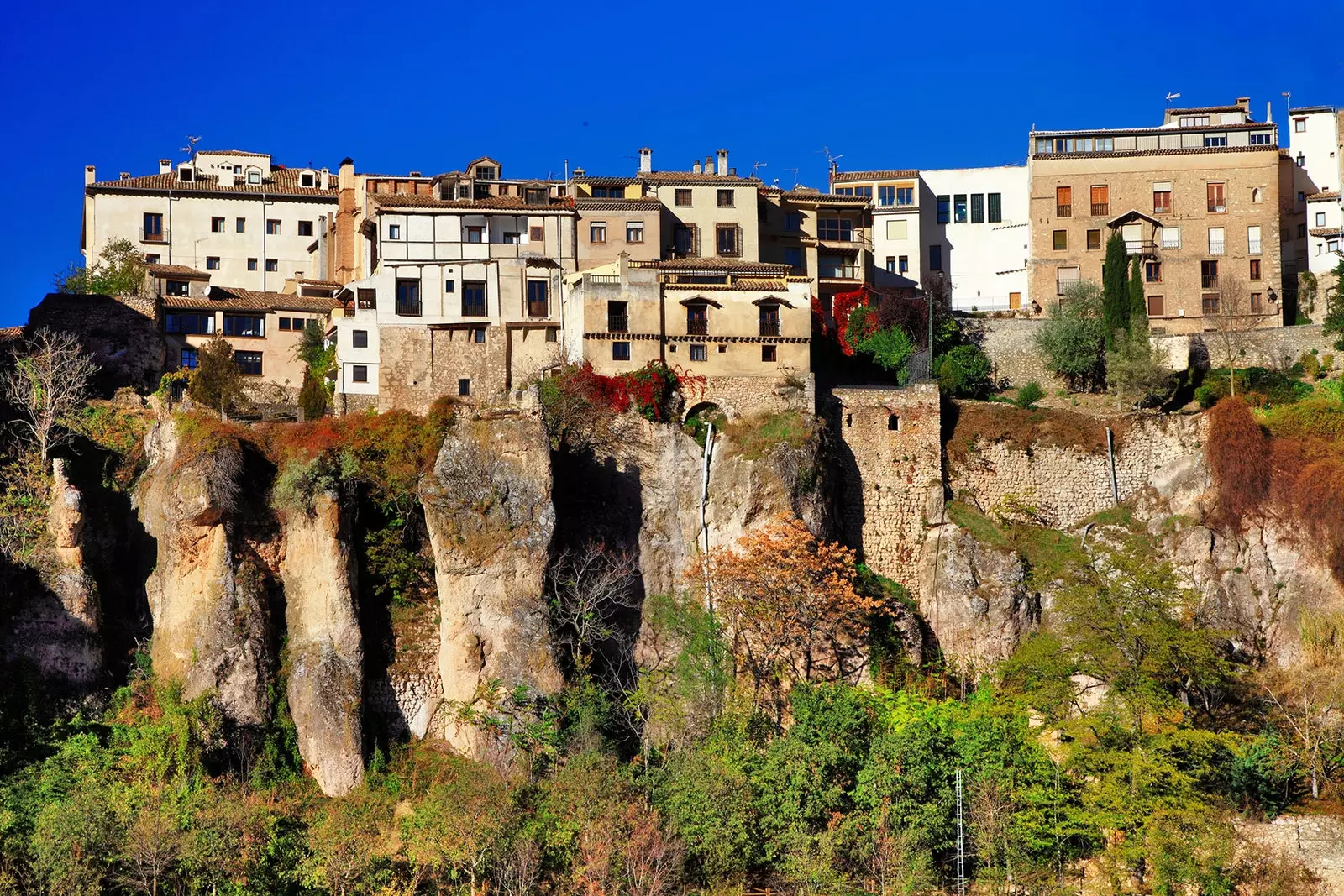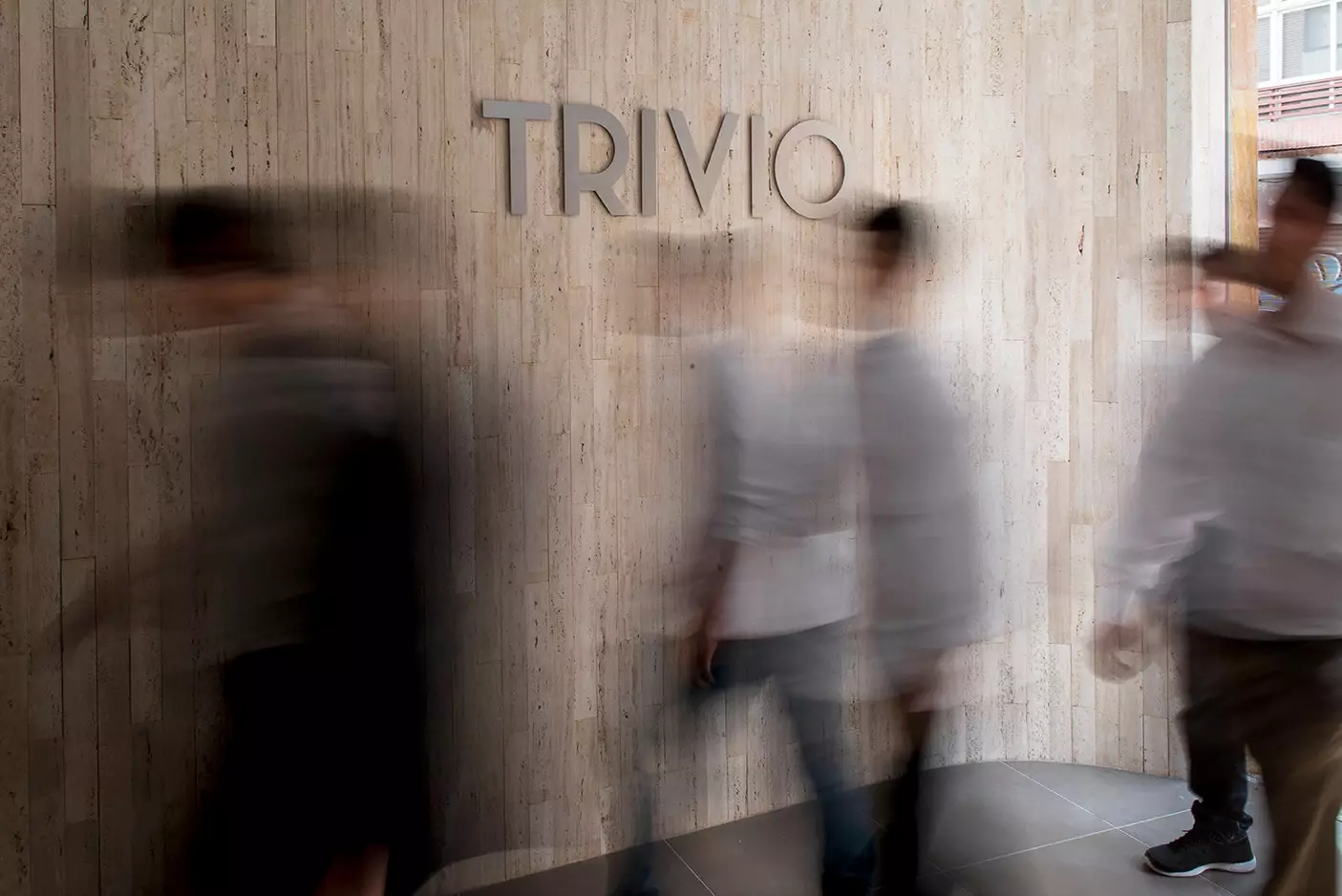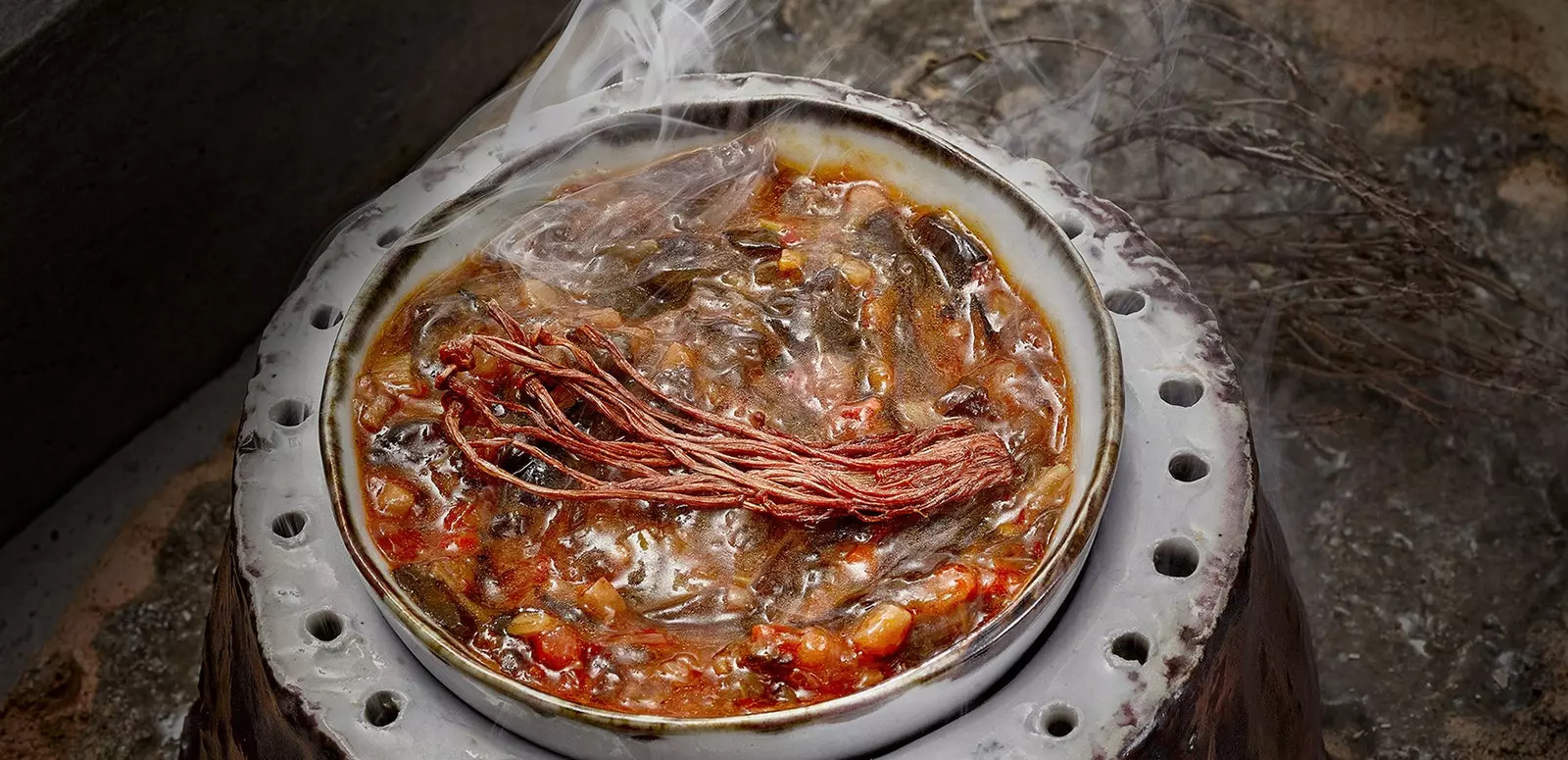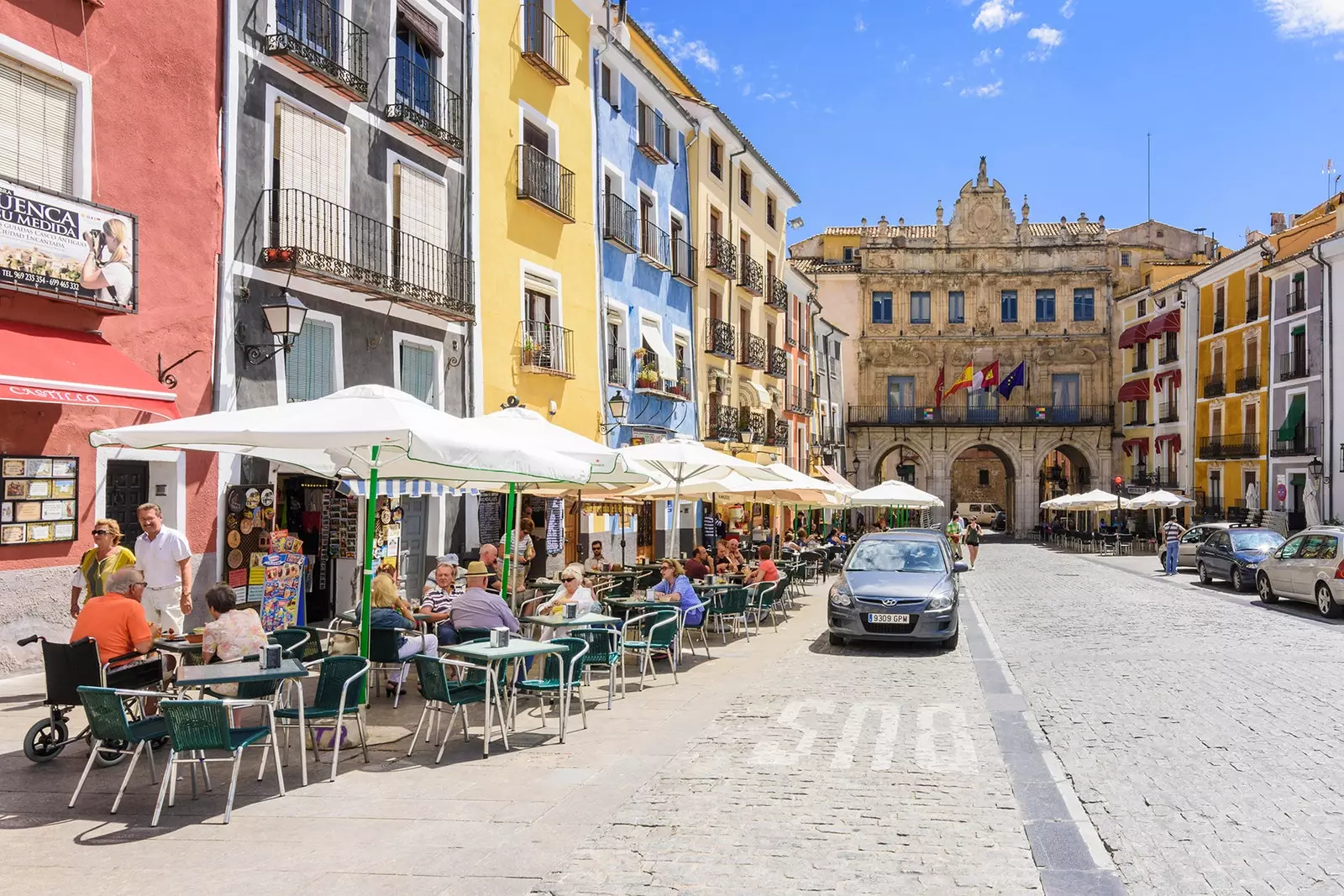
Cuenca, gastronomic capital 2018?
MICHELIN STAR WHAT FOR?
One of the collateral effects of being a gastronomic capital is the general rise in self-esteem . If not, tell Burgos or Huelva, two cities that did not seem to believe that their kitchens are good beyond their products.
In the case of **Watershed**, this effect isn't so much a first step as it is the end of the fuse. In other words, he has spent years overcoming the trauma caused by the closure of Manolo de la Osa's restaurant in the failed Ars Natura (and his hopeful appearance in the Red Guide) based on good work in the kitchen without betraying tradition.
Because Cuenca is not avant-garde land on the plate and not because it doesn't have an audience for it, but because there is still a lot of territory to explore in its roots.

Trivio restaurant entrance
The fact is that the city of the Hanging Houses has a highly respected haute cuisine space such as El Figon del Huecar , a visual spectacle and domain of the local and national product with a large winery where it is impossible not to hit.
Or the riskiest trivium , an exemplary restaurant that combines innovations with respect for the native flavor, in an attempt to satisfy the foodies who seek 'conquenseidad' and surprise.

vegetable tripe
A similar achievement is what distinguishes the kitchen from Jose Ignacio Herraiz in the Raff-San Pedro , although in this case the recipes drink more from distant sources. Three examples of what haute cuisine is not so orphaned of representatives in this vertiginous piece of land between Huécar and Júcar.
Make a reservation if you want to go to ** Olea Comedor ** _(Calle Colón, 54; Cuenca) _, a small Nordic-inspired space, an exquisite wine list at more than reasonable prices and international portions to share. Their Causa Limeña is a must.
THE HUNTING TIME AND THE MORTERUELO
Beyond the tablecloths with their own name, Cuenca has the merit of having turned two of the most complex dishes of our gastronomy into an essential delicacy.
On one side is the mortar , a stew made with pork liver and other meats of all kinds of animals that is usually eaten accompanied by a little bread or some croutons. A recipe very typical of Castilla-La Mancha that in this city has evolved from a dish for the poor to a gourmet experience, especially in bars and tables like those of Basilio's Cellar (the legendary temple of this pastoral pâté), **Mesón el Tormo, in the Posada de San José ** or in La Ponderosa.
For its part, the hunting in Cuenca It is modernized and adapts to all kinds of palates, erasing that fame of hard, tannin and forceful dish that had been carved out in the roughest inns. Hence, in restaurants like The secret you can enjoy deer or wild boar meat in a young atmosphere and with recipes suitable for all types of public.
TAPAS AND UNESCO
A squirrel could cross the entire city jumping from monument to monument protected by UNESCO. And a good tapas lover it would be able to do the same from bar to bar, from snack to snack, from portion to portion.
Cuenca is establishing itself as one of the Spanish capitals where this gastronomic subgenre is best enjoyed on its own merits. Its most famous dishes (in addition to the morteruelo, the ajoarriero and meat ) have the advantage that they can be served in small quantities, offering a more rogue alternative to your restaurants.
The city, through its flavors, draws two main routes, although tapas is Synonym of improvise and more when it is done in a city that can be covered, as is the case.

Tapas in Cuenca
On the one hand, there is the high and historical part, a part of Cuenca that has gone from being a guirilandia to being one of the most frequented by the people of Cuenca. Here it is essential to El Botijo, the Mangana Restaurant or in the Coto de San Juan or the sophisticated ** Albero Tavern ,** all of them located in the Plaza Mayor and surroundings, or if not go up to the Castle, where the terraces and the atmosphere of the Maria Morena Grill , the Torreón or the Castle Bar.
However, the true paradise of tapas is bustling in the new part of the city, which is why it is worth leaving aside the most visited area to kick the San Francisco Street (la Calle Laurel Cuenca) where you have to stop yes or yes in the Bar Fidel to have a pincho de tortilla , in the aforementioned ponderous, in the famous Basilio's cellar or in the San Jose Inn , places to eat standing up or sitting down that have made microgastronomy (to call it that) an essential practice in the city.
AN INDIGENOUS PAIRING
Beyond its gastronomic rebirth, the enhancement of its native dishes and tapas as a religion, there is a compelling reason to claim Cuenca's gastronomy: their wines.
Something is happening in this province in terms of wine, with a variety of amazing landscapes and with a wide spectrum of grapes and wine styles that makes beer take second place both as an aperitif and as a meal.
For this pairing of all sizes it is essential to have some of those whites that are changing the landscape of the province as Secua, Domain of Fontana, Fuente or Mesta. Simple wines to drink, that convince both the best noses and the palates less vintners and that are complemented by other interesting reds and ideal for the morteruelo and the most forceful portions, among which the young wines of Peter Heras .
